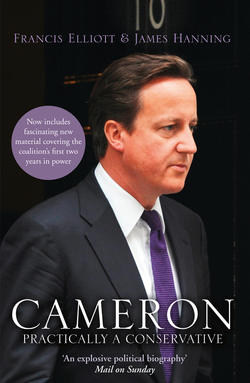Читать книгу Cameron: Practically a Conservative - Elliott Francis Perry - Страница 10
GAYFERE STREET General election campaign 1992
ОглавлениеIt was well before dawn when David Cameron slipped into Tory headquarters in Smith Square on 3 March 1992. Assembled before him at 5 a.m. were a team of Tory staffers, many wondering why they had been asked to come to work so early that day. Cameron told them that this was a ‘dry run’ for the election campaign to be announced by John Major the following week. They had about two hours to gut that day’s newspapers, monitor every television and radio bulletin and prepare a brief for the Prime Minister on any topic he might face at a press conference at 8.30 a.m. In addition, said Cameron, the staffers were to prepare the launch of a new policy on education, that day’s theme. The exercise, to be conducted under conditions of extreme secrecy, would determine whether they – and Cameron himself – could be trusted in the heat of the looming battle.
The morning went well and Cameron was duly handed the critical campaign role of briefing John Major before each morning’s press conference. Chris Patten recalls: ‘I approved that appointment. It was a job I had at one time done myself. He was intelligent and hard-working.’ Others who had held the position include Michael Portillo in 1983 and David Willetts in 1987. Cameron has described his role as a ‘pretty hairy job’. By now he was being routinely termed ‘high-flying’, but his latest job carried a different order of responsibility.
In fact the Conservatives’ successful election campaign of 1992 strengthened his self-belief as well as his most important political bond. During the campaign Cameron and Hilton shared lodgings in Gayfere Street, a smart Westminster road leading directly on to Smith Square. The house belonged to Alan Duncan, who had made millions in the oil industry before becoming an MP. It had already served as the campaign headquarters for Major’s leadership campaign two years previously. Now it was the ‘bunker’ to which Cameron and Hilton retired for a few hours’ sleep when they could.
It was a frenetic existence, as one of Cameron’s colleagues recalls. Maurice Fraser worked in the Foreign Office and moved on the eve of the election to take on a role briefing the Tory leader. ‘At 4.30 David and I would get into Central Office and pick out the stories that were likely to come up at that morning’s press conference. We’d provide a one-side briefing note with a “line to take” on twenty to thirty subjects. David managed the exercise and did all the domestic issues, I did foreign. His briefing notes and mine would then go to the PM or whoever was doing the presser.’ At 7.30 a.m., Cameron briefed Major himself at Central Office, preparing him for the daily press conference, at a meeting that included Tim Collins and Shaun Woodward, two more youthful Tory aides. Once on the road, Major was kept informed about events back at base by Ed Llewellyn, who travelled with him. The youth of Major’s backroom staff did not go unnoticed at the time. The press dubbed them the ‘brat pack’ – noting that Hilton was too young to have voted in a previous election.
To be re-elected the Tories had to discredit the alternative administration being offered by Neil Kinnock. The party knew from the previous campaign, ‘Summer Heat on Labour’, that sufficient numbers of voters had serious doubts about Labour to give them a chance. Cameron, who had worked on this embryonic campaign, had also helped decide twelve months previously to make ‘trust’ the key issue. The tactic was clear: run a negative pre-campaign undermining confidence in a future Labour government before playing on Major’s reputation for decency during a far more positive ‘short’ campaign, the period from the formal election announcement to polling day.
